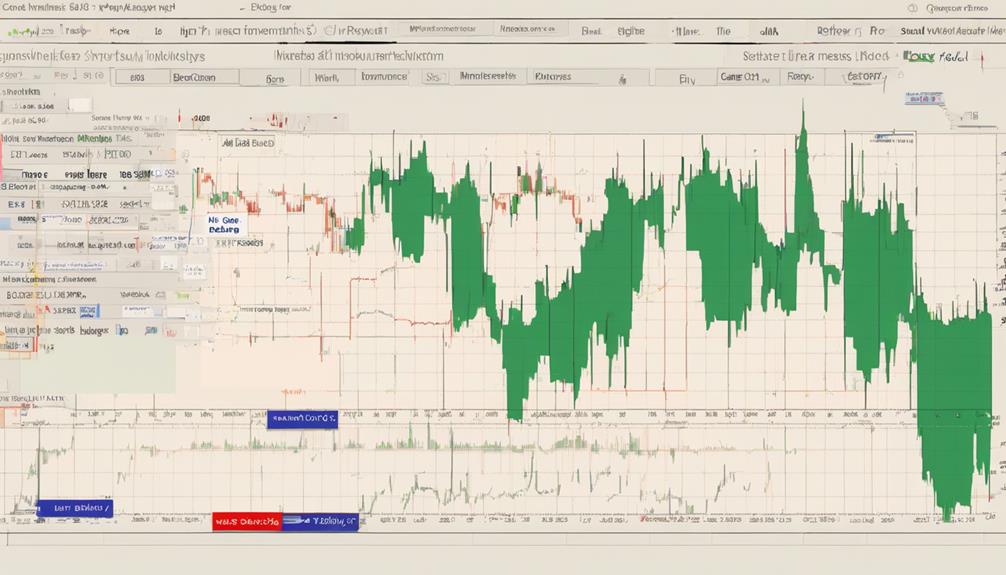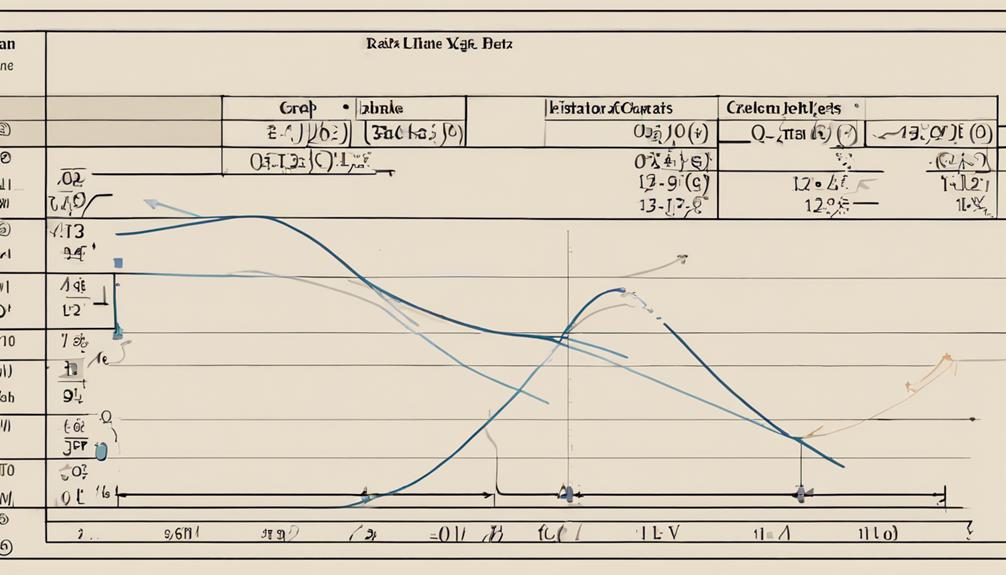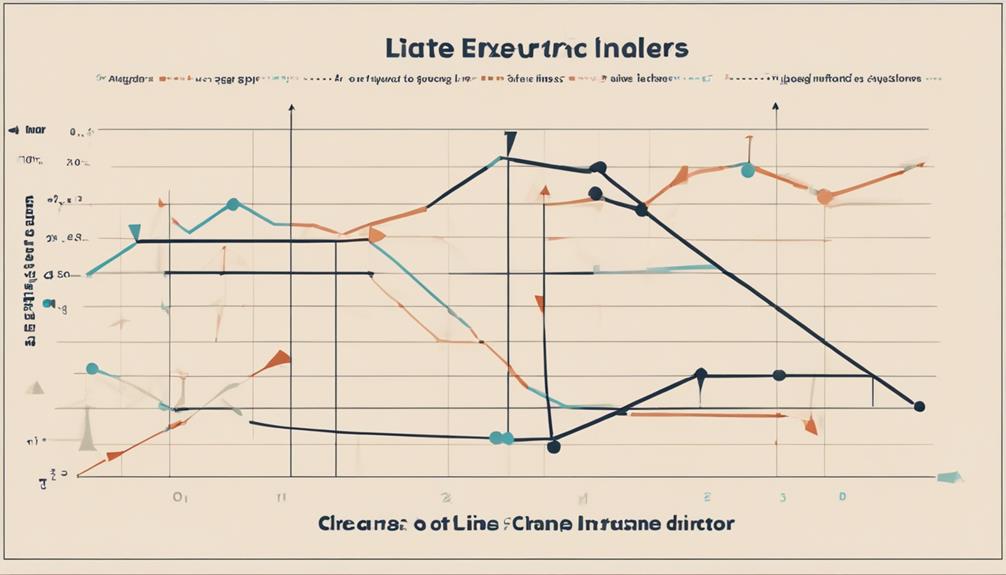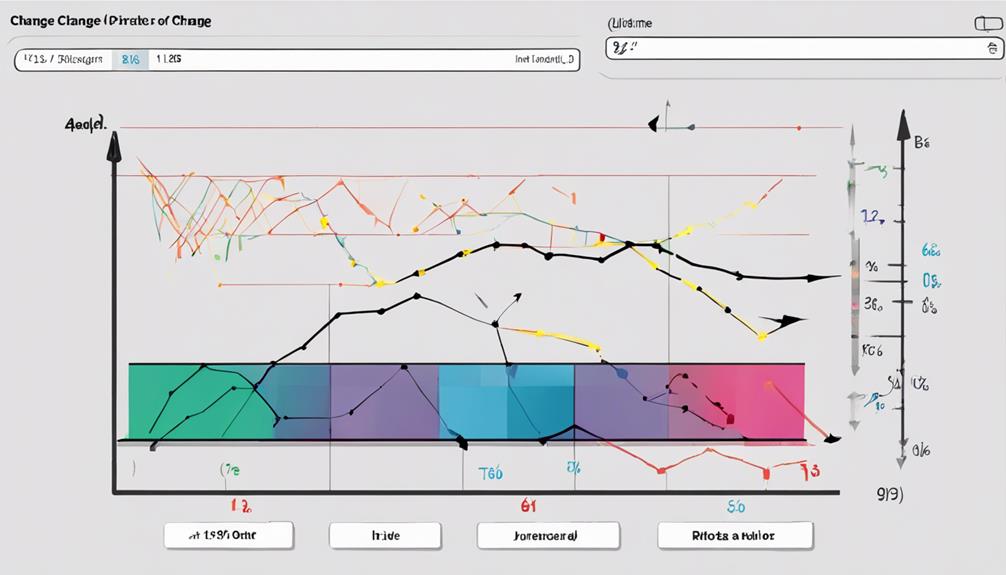The Rate of Change (ROC) indicator is a fundamental tool in technical analysis that provides traders with crucial insights into a security's momentum and trend strength. By measuring the velocity of price changes over a specified period, ROC offers valuable signals for identifying market conditions, potential divergences, and strategic entry or exit points.
However, understanding the nuances of ROC goes beyond its basic definition, delving into its applications, advantages, and limitations. Exploring how this indicator can enhance trading strategies and decision-making processes is essential for any investor seeking to gain a competitive edge in the financial markets.
Definition and Formula
The Rate of Change (ROC) indicator, a fundamental tool in technical analysis, quantifies the velocity of price movements within a security. It calculates the percentage change in price over a specified number of periods, helping traders assess the momentum and potential direction of a security. The formula for ROC is [(Current Price – Price n periods ago) / Price n periods ago] x 100, where the 'n' value represents the chosen calculation period.
ROC is crucial for identifying overbought and oversold zones in the market. Positive ROC values indicate an upward trend, suggesting buying opportunities, while negative ROC values signify a downward trend, signaling potential selling opportunities. Selecting the appropriate calculation period is essential to ensure the accuracy and relevance of ROC readings.
Shorter periods can provide more timely signals but may be prone to noise, while longer periods offer smoother signals but may lag behind current price movements. Traders must carefully consider market conditions and their trading objectives when choosing the right calculation period for ROC analysis.
Interpretation and Analysis

Analyzing the Rate of Change (ROC) indicator provides traders with valuable insights into the momentum and potential direction of a security based on the speed of price changes measured over specific periods. In technical analysis, ROC helps identify trends by calculating the percentage change in price from a specified past period.
Positive ROC values suggest an uptrend, indicating that the current price is higher than it was n periods ago. Conversely, negative ROC values signal a downtrend, showing a decrease in price compared to the past. Traders often use ROC to determine overbought or oversold conditions in the market.
When ROC values are high, it may indicate an overbought situation, while low ROC values could suggest an oversold condition. As a momentum indicator, ROC oscillates around a zero-level midpoint, providing traders with crucial information about the strength and direction of price movements, aiding in decision-making processes regarding buying or selling securities.
Calculation and Application

Utilizing the Rate of Change (ROC) indicator involves precise calculations to evaluate the percentage change in a security's price relative to a past period, aiding traders in assessing market conditions and potential momentum shifts. The calculation of ROC is based on the formula [(Current Price – Price n Periods Ago) / Price n Periods Ago] x 100, allowing traders to interpret the speed of price changes and identify possible momentum shifts. Key aspects of the calculation and application of ROC include:
- ROC calculates the percentage change in price between the current price and a past price.
- Positive ROC values indicate an uptrend, while negative values suggest a downtrend.
- ROC is utilized in technical analysis to identify overbought or oversold conditions in the market.
- Traders use ROC to gauge the speed of price changes and assess potential momentum shifts.
- ROC assists traders in understanding market conditions and making informed decisions based on price changes.
Advantages and Benefits

Enhancing trading strategies with the Rate of Change (ROC) indicator offers significant advantages and benefits in identifying market trends and optimizing trade timing.
The ROC indicator, a key tool in technical analysis, helps traders pinpoint overbought and oversold conditions in a security, enabling them to make informed decisions. By highlighting divergences between price and momentum, ROC assists in signaling potential trend reversals, providing traders with crucial insights into market movements.
Moreover, traders leverage ROC crossovers as buy or sell signals to validate the direction of a trend, enhancing their decision-making process. The timely reversal signals generated by ROC are valuable across various timeframes and markets, making it a versatile indicator for traders.
Limitations and Considerations

The Rate of Change (ROC) indicator, despite its effectiveness in identifying market trends and optimizing trade timing, presents limitations and considerations that traders need to carefully navigate. When utilizing the ROC indicator in technical analysis, traders should be aware of the following:
- False signals may be generated in choppy or sideways markets, leading to potential trading losses.
- The ROC indicator can lag behind actual price movements, affecting the timeliness of trade signals and execution.
- It is common practice to combine ROC with other analysis tools for confirmation and to enhance the accuracy of trading decisions.
- Adjustments to ROC strategies might be necessary based on evolving market conditions and levels of volatility.
- Seeking confirmation from additional indicators is advisable to validate signals provided by the ROC indicator and to reduce the likelihood of making uninformed trading choices.
Considering these limitations and factors is crucial for traders aiming to leverage the ROC indicator effectively in their decision-making processes.
How Can I Use the Rate of Change Indicator in Trading?
When using rate of change indicator in trading, you can identify the strength and direction of a trend. By analyzing the speed at which prices are changing, the indicator can help confirm potential trend reversals or highlight opportunities for entering or exiting trades.
Frequently Asked Questions
What Does the ROC Indicator Tell You?
The ROC indicator provides insights into price momentum by comparing current prices to historical values. It helps traders identify market trends, overbought or oversold conditions, and potential reversals. Positive values indicate uptrends, while negative values signal downtrends.
How Can We Use Indicators to Measure Rate of Change?
Analyzing indicators to measure rate of change involves assessing price fluctuations over specific periods. By comparing current prices with historical data, investors gauge the momentum of a security. Accurate selection of time frames is pivotal for precise interpretations.
Is Rate of Change a Leading Indicator?
Yes, the Rate of Change (ROC) indicator is considered a leading indicator in technical analysis. It offers insights into potential price movements before they occur, helping traders anticipate trend reversals and identify overbought/oversold conditions for informed decision-making.
What Is the Rate of Change Indicator in Tradingview?
The Rate of Change (ROC) indicator in TradingView calculates the percentage price change between the current and a specified past period. Traders leverage ROC to gauge price momentum, identify potential reversals, and fine-tune trading strategies.
Conclusion
In conclusion, the Rate of Change indicator provides valuable insights into price momentum and trend strength, aiding traders in making informed decisions. By comparing current prices with past prices, ROC helps identify overbought or oversold conditions and potential divergences for strategic trading signals.
Despite its limitations, such as sensitivity to market fluctuations, ROC remains a useful tool for technical analysis. In the grand scheme of trading strategies, 'the proof is in the pudding' when it comes to utilizing the Rate of Change indicator effectively.
